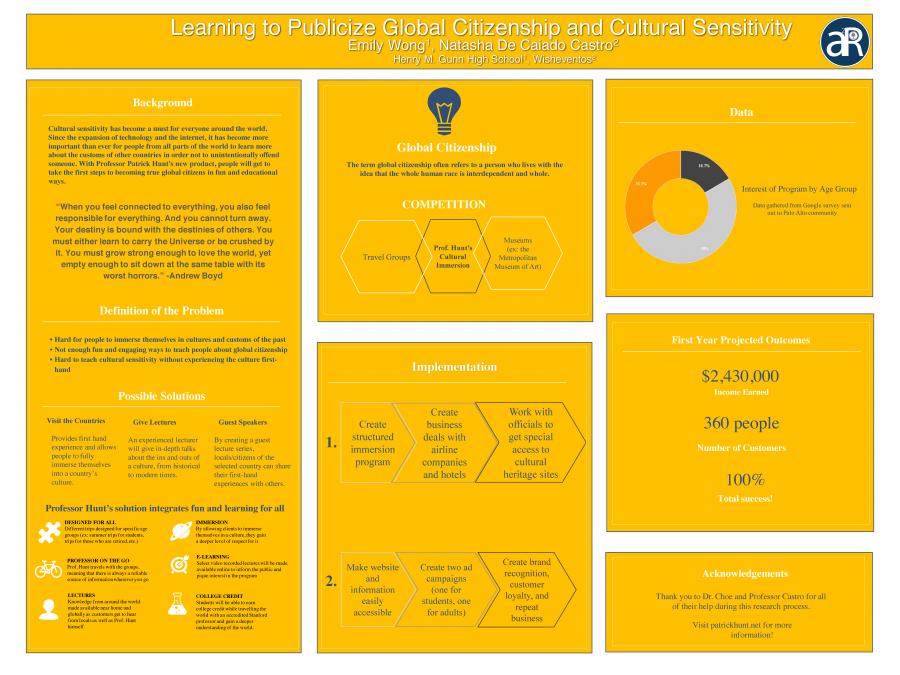Learning to Publicize Global Citizenship and Cultural Sensitivity by Emily W.
Presentation
Summary
The term global citizenship often refers to a person who identifies their citizenship with the global community instead of one specific nation or country. A person who believes in global citizenship lives with the idea that the whole human race is one; that is interdependent and whole. When one lives in a country, they unconsciously soak up knowledge of the culture that they live in. In a sense, by simply living there, the person begins to “become one” with the country, its history, and its cultural customs. In a way, to truly be global citizen, one would have to be at least somewhat knowledgeable in the many different cultures from around the world. However, how does one fully immerse themselves in another country’s culture without spending a significant portion of time in said country? What about if one wants to learn about a culture from over a few hundred years ago? Stanford professor Patrick Hunt has come up with a solution to that problem. The product that he is developing includes both tours and lectures, allowing people to learn not only about current cultural trends, but also trends and history from many years ago...Cultural sensitivity has become a must for everyone around the world. Since the expansion of technology and the internet, it has become more important than ever for people from all parts of the world to learn more about the customs of other countries in order not to unintentionally offend someone. With Professor Patrick Hunt’s new product, people will get to take the first steps to becoming true global citizens in fun and educational ways...Research on how to brand Professor Patrick Hunt’s product will be conducted through the rest of the school year/for the duration of the AAR research period. The first few weeks (around one month) will be dedicated to researching the competition in this market that Professor Hunt’s product will be penetrating. This will include scouring the web for similar products offered by other companies, and how successful those products have been. The next few weeks after that will be dedicated to researching the target market and how successful the product could potentially be when introduced to the tourism market. The rest of the time will be spent figuring out how to brand and introduce the product to the market, such that it seems fun and educational, while also significantly different enough from competitors to create its own niche market.

